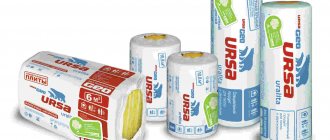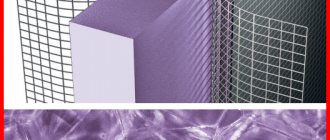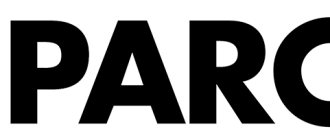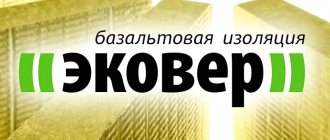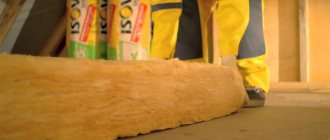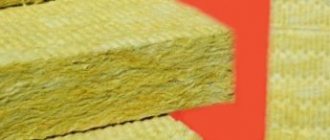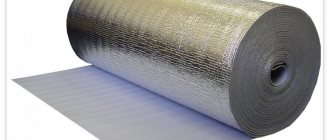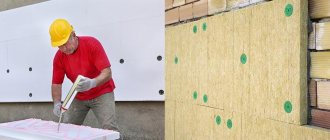Thermal insulation Bronya is a modern material for insulating objects for various purposes. In structure and method of application, the substance resembles paint. On the market you can find products with similar properties: Asstratek and Corundum. Unlike other types of thermal insulation, Bronya brand paint will not hide space. According to its characteristics, a thin layer can replace a mineral wool slab up to 50 mm thick.
Composition and properties
Ultra-thin liquid insulation protects metal surfaces from corrosion and helps reduce heat loss from the room. It can be considered a universal option that combines the properties of thermal insulation and paint and varnish materials. Liquid Armor is the result of the development of Russian scientists. The product was presented by the Volgograd Innovation Resource Center. Compound:
- acrylic binder;
- catalysts;
- clamps;
- ceramic microspheres, characterized by ultra-thin walls, they contain rarefied air.
Auxiliary components are special compounds that protect metal structural elements from corrosion, and concrete surfaces from fungus and mold. Bronya insulation has a liquid structure, the consistency resembles paint.
Product color is white. This is ultra-thin thermal insulation. With its help, structural elements made of different materials are protected from heat loss: concrete, metal, etc.
Thanks to the polymer base, the coating becomes elastic after application, which allows it to withstand deformation processes and a small tensile load. Ultra-thin thermal insulation Armor is used as insulation due to the rarefied air that is inside the microspheres. Main characteristics:
- the thermal conductivity coefficient is much lower than that of most analogues and amounts to 0.001 W/(m*C);
- Bronya heat-insulating paint can be used at high and low temperatures: from -60...+250°C;
- does not cause harm to humans, since the composition does not contain highly toxic and volatile compounds;
- fire and explosion safety;
- resistance to aggressive environments, liquid thermal insulation. Armor can come into contact with alkaline mixtures and saline solutions.
Due to its properties, the insulation lasts for a very long time. Its average service life varies from 15 to 30 years. The mixture is called ceramic armor. It can be paint, a liquid mixture, etc., but the structure is the same.
Certification
Along with full basic certification (Fire certificates, SGR, certificates of conformity), LCD has an expanded certification package:
-Technical Certificate of the Ministry of Construction and Housing and Public Utilities of the Russian Federation, based on the “Technical Assessment of the Federal Autonomous Institution FCS” - the Main highest approval in the field of construction in the Russian Federation (Technical Certificate + Technical Assessment).
-Tests (confirmation of the declared physical properties) in a European laboratory according to standard EN 1504-2 to confirm the declared characteristics in TU 2216-006-09560516-2013. — As a basis for assigning the right to use CE marking.
— confirmation of the declared physical properties in the European laboratory according to the EN 15824 standard, CE certificates for Bronya Classic, Bronya Classic NG, Bronya Facade, Bronya Facade NG, Bronya Zima Bronya Fire Protection.
-Certificate of the Ministry of Regional Development of the Russian Federation, represented by Housing and Municipal Construction Certification, on the inclusion of thermal insulating polymer coating in the official register of technologies, equipment and materials used in the housing and communal services sector of the Russian Federation.
-Certification in the Gazpromsertification system.
-Certificate of conformity in the Mosstroysertifikatsiya system (with the issuance of a separate frame certificate for each modification).
-Certificate of type approval of the Russian Maritime Register of Shipping.
-Certificate of the ISS "NEFTEGAZ ENERGOEXPERT" on inclusion in the register of suppliers of the oil and gas complex.
-Certificate in accordance with GOST R.
-Fire safety certificate.
-Sanitary and epidemiological conclusion.
-Certificate of the fuel and energy complex TEXERT.
-Certificate of the Federal Directory of the Fuel and Energy Complex.
-Ultra-thin thermal insulation Bronya and its production are certified in the ISO 9001:2011 system and can be used in Russia without restrictions.
-Certificate of approval for use in Saudi Arabia.
-Certificate of approval for use in the UAE.
Liquid ultra-thin thermal insulation has undergone laboratory tests of all physical and thermophysical indicators by certified laboratories. In its archive, the regalia has a huge number of official acts, tests and conclusions on successful application from leading enterprises of industry, resource extraction and processing, housing and communal services, municipal unitary enterprises, etc. The production and use of liquid ceramic heat-insulating materials Bronya are protected by patents.
Application area
Thanks to its excellent characteristics, Bronya insulation is used everywhere. It is used to protect buildings inside and outside. The material is used in the process of insulating communications, insulating wires, etc. The range of application of the mixture is quite wide:
- Protection of vertical and horizontal structural elements of various buildings (floors, walls, ceilings), roofs.
- Possibility of insulating a residential building and large-sized objects, poorly heated premises (hangars, warehouses, workshops).
- Thanks to special additives, the Liquid Armor mixture has anti-corrosion properties and can be used on any metal surfaces.
- Protection of communications of any type from freezing (water supply, sewerage, heating and air conditioning systems, gas and steam pipelines).
- Insulation of the main components of the heating and hot water supply system: boilers, boilers, various types of heat exchangers.
- Oil pipelines that are located below and above soil level.
- This type of thermal insulation is also quite suitable for refrigeration equipment.
- Insulation of water storage facilities and containers for chemical reagents.
- Bronya mixture is used to protect cars (railway, metro) and tanks from heat loss.
- Thermal insulation of ships, boats, yachts and boats (internal surfaces, engine room).
Where is Armor used?
Due to its special characteristics, this heat insulator is used universally at various repair and construction sites; and it’s not surprising, because the armor can easily withstand temperatures of both -60 degrees and +280 degrees. If you believe numerous reviews, houses treated with Bronya thermal insulation gain high-quality protection from humidity and cold. With the help of Armor, you can even eliminate sources of heat loss in tanks and heating lines. In addition, this heat insulator can be used to insulate internal partitions and roof structures, and finish the walls of new premises.
It is also worth noting that when compared with other materials for similar purposes, Bronya thermal insulation has significant advantages, including:
- long service life (may exceed fifteen years);
- the minimum number of tools required to apply the material;
- high rate of adhesion, that is, adhesion to the surface;
- the minimum thickness of the formed layer (this is no more than 6 millimeters);
- Finally, the last advantage is that the heat insulator can be applied to almost all surfaces.
Note! The consumption of Armor mentioned above (meaning 1 liter per 1 sq.m., provided that the layer thickness is 1 millimeter) is an indicator calculated in laboratory conditions. In reality, this indicator may change; it all depends on the specific conditions of use (for example, if the surface is uneven, then the consumption will definitely increase).
Now let's find out about more specific examples of the use of liquid thermal insulation found in everyday life. So, as noted above, Armor can be used to insulate walls, roofs and windows, not only from the inside, but also from the outside. What is characteristic is that the surfaces themselves remain “breathable” after treatment. Thermal insulation is also used in pipelines (not only for hot, but also for cold water), in heating equipment of heating stations - both for domestic and industrial purposes.
In addition, Armor is effectively used to protect against the negative effects of external environmental factors. This point should be considered in more detail.
- The substance can be used as hydro- and thermal insulation under concrete screed.
- It can also be used as a protective layer for open-air structures and external wall surfaces.
- Finally, Armor is often used as insulation for metal structures of buildings, due to which the possibility of condensation forming on them is reduced to zero.
Advantages and disadvantages
When choosing a material with which you can influence the intensity of heat outflow, it is recommended to study the properties and reviews. To select a suitable option from the coatings offered on the market, you should pay attention to the positive and negative qualities of the product. The advantages of the liquid mixture produced under the Bronya brand include the following properties:
- thin layer of coating;
- versatility;
- ease of use;
- the coating does not lose its properties in extreme cold and heat;
- high efficiency;
- the coating does not weigh down the structure;
- excellent adhesion to different types of surfaces;
- the material is non-hygroscopic;
- resistance to UV radiation;
- subject to repair;
- sufficient level of strength.
The material has many advantages. There is a variety of mixtures of this brand:
- for use in winter;
- plastering compounds, etc.
Various types of products are created to protect objects with different characteristics. This means that each option is suitable for use under certain conditions. A significant level of material efficiency is achieved.
The disadvantages include high cost. You can purchase formulations of various types, which are produced under the Bronya brand, for 350-1000 rubles. The price is for 1 liter of liquid. Despite the fact that the material is allowed to be used at temperatures of -60...+250°C, insulation work can only be carried out if the air temperature is above zero. Recommended conditions: +7…+150°С. If you plan to isolate an object for the winter, it is better to do this long before the onset of frost. Disadvantages include drying time. It is allowed to continue work one day after applying the coating.
Overview of coating types
Before choosing a mixture, it is necessary to determine the tasks that you plan to solve with its help. Different materials are created for different conditions. Accordingly, they may differ in properties despite the fact that they have a similar structure. Product range:
- Bronya Classic is a universal composition that is considered basic. It is used for various purposes and is characterized by all the properties of the Bronya thermal insulation material. Available in 5, 10 and 20 liter containers.
- Bronya Standard/Standard N is a budget version of the mixture. It is offered at an affordable price and has a standard set of Bronya thermal insulation properties. At a minimum cost, good protection against heat loss is provided. This mixture is most effective when it is necessary to isolate communications and containers. Option Standard NG is a non-flammable type of material.
- Anticorrosive Thermal insulation, which is applied to the rusted surface, but it is first recommended to remove the loose layer.
- Winter insulation. The composition can withstand low temperatures down to -30°C. It can be applied in any weather conditions, even if it is winter outside.
- Facade paint is a universal mixture, however, it is recommended for use on objects where it is important to ensure vapor permeability. Due to this property, this type of thermal insulation is often used to protect facades.
- Light. The main purpose is the finishing of internal and external surfaces of various types of objects.
- Fire protection is a special composition whose action is aimed at increasing the fire resistance of buildings.
- Universal and Universal NG are an option similar in properties to the mixture of Classic and Standard. At a relatively low price, the protection indicators are high.
- Metal is a simplified but effective version of the Anticor mixture. Offered at a low price.
- The wall is another type that was created as an analogue of more expensive materials. This mixture is similar in properties to the Facade coating. Another option is the Wall NG. It is characterized by fire resistance in addition to the main parameters.
- Nord, Nord NG - a cheap analogue of the Winter mixture.
- Anti-condensation PRO is an effective protection against moisture on various types of surfaces. Typically used for equipment repairs and thermal insulation of communications.
Operating principle
Heat can be transferred in several ways:
- Convection.
- Thermal conductivity.
- Thermal radiation.
Each option is characterized by different principles of heat distribution:
- liquid, gaseous medium
- kinetic energy of the smallest particles
- electromagnetic radiation.
In any of the cases, 2 types of body are involved: one of them is hotter, the other is weaker or completely cold. It is interesting that the insulating material of the Bronya brand to some extent combines 3 methods. The main part of the composition is microspheres filled with rarefied air (80%). The rest of the binder produces heat due to its thermal conductivity property.
The surface receives some of its heat through the process of convection and radiation. Considering that the microspheres contain air, heat loss will be small. This is the most suitable (after vacuum) medium that can be used as an insulator. Due to the low intensity of heat transfer, the material helps maintain the desired temperature of the object.
What is Bronya thermal insulation?
Armor is a liquid thermal insulation containing ceramic microgranules. The
“ultra-thin thermal insulation” coating is a substance similar in appearance, application method and structure to paint. This mastic contains the following components:
- basic acrylic binder, in proportion – 5 parts of the total mass;
- polymer fixatives;
- catalytic agents;
- filler made of microspheres, in a proportional ratio of 4 parts of the total mass, is of ceramic origin with micro-thin walls and rarefied air inside (up to 80% rarefied).
The structure contains antiseptic and anti-corrosion additives as auxiliary components.
Bronya heat-insulating paint is often produced in the form of a white suspension, which, after hardening on the surface, creates a dense film with a matte tint. The material is elastic to the touch, and in terms of the quality of its interaction with the environment, it is resistant to all types of impact. The thermal insulation effect is due to the inability of the rarefied air limited in the sphere to conduct thermal energy (the principle of vacuum space).
Initially, ceramic-type thermal insulation was planned to be used for the space industry.
Heat insulator brands
The manufacturer presents several main options for liquid heat insulation.
Armor Anticor
Effective for insulating metal surfaces.
It can be applied directly to materials that contain signs of developing corrosion processes, without pre-treatment with anti-corrosion substances.
Classic
Bronya Classic is a universal insulating substance that is ideal for processing traditional coatings.
Withstands exposure to elevated temperatures up to 200 °C.
Facade
Bronya Facade - reliably insulates rooms from the inside, without interfering with full air circulation, which avoids the appearance of rot and the formation of fungi.
Armor Winter
The mixture allows you to insulate objects at low temperatures down to -35 oC.
Material quality
Bronya thermal insulation prepared for use has the appearance of a viscous, relatively thick substance. The main part of the substance (about 80%) is formed by air-containing ceramic microgranules. Together with binding acrylic polymers, the granules create a viscous mass that can be diluted with ordinary water, thereby creating a moisture-impermeable, lightweight and durable film.
As for the heat transfer coefficient, here this figure is no more than 0.018 W/m2. Currently, this is a record characteristic for liquid thermal insulation materials.
Insulation Armor practically does not absorb moisture. The indicator of its absorption with the full content of the insulator in water throughout the day is equal to a scanty 0.02 g/cm3. This quality shows how effective a waterproofing agent this substance is.
The material does not burn, and due to its complex chemical structure it is not damaged by insects and other small pests.
Liquid thermal insulation has excellent adhesion. The material effectively covers any surface: brick, concrete, wood, metal, plastic and even glass. A completely hardened thermal insulator is converted into the thinnest film, which, despite the minuscule width of the layer, reliably protects objects from loss of thermal energy.
Another important point is the ease of application of the insulating base. You can cope with the task using a regular brush, roller, spatula or spray.
As for the consumption of liquid heat insulator, in laboratory conditions this figure is equal to one liter per 1 m2 when the substance is applied in a layer of 1 mm. Depending on the presence of certain conditions, the thickness of the insulating coating may vary.
Options
The technical characteristics of the material are as follows:
- Appearance: homogeneous, smooth matte white surface.
- The resistance of the material to temperature changes is in the range from -40 to 60 °C.
- The service life of the insulating layer when processing metal, brick, and concrete surfaces in temperate climates (using the example of Moscow) is about 15 years.
- The permeability coefficient for water vapor is 0.003 mg/m2.
- The maximum permissible operating temperature of the insulating coating when short-term peak values are reached is no more than 260 °C.
- The density of liquid thermal insulation at room temperature is 600±10% kg/m3.
- pH value – from 7.5 to 11 pH.
- The mass fraction of volatile substances is about 40%.
- The time required for the liquid thermal insulation layer to completely harden at room temperature is no more than 24 hours.
- The level of adhesion to concrete, metal, brick surfaces ranges from 1.3 to 2.2 MPa.
- The resistance of the insulating coating to water, 5% alkaline solution at room temperature - the appearance and properties remain unchanged.
Types of liquid insulation
Types of thermal insulation depending on the purpose
The manufacturer offers several modifications of the product. Each type of composite has a base base and certain additives depending on the purpose of the paint. Options for insulating facades differ from each other in terms of climatic design, where for more severe regions, composites have been developed that are designed for a greater number of cycles of exposure to negative temperatures. Specialized mixtures are more focused on protection against moisture, fungal elements and fire.
Base Coats
The following brands of mastics are produced under the basic ones:
- Classic NG, Classic;
- Facade NG, Facade;
- Anticorrosive;
- Winter NG, Winter.
These are standard modifications of the heat insulator for operation at positive and negative temperatures.
Budget coverings
Thermal insulation for metal pipes is cheaper, but has lower quality characteristics.
Brands of budget composites are represented by the following options:
- Universal NG, Universal;
- Wall NG, Wall;
- Metal;
- Nord NG, Nord.
A series of analogues of basic brands has lower performance indicators and a smaller price niche.
Characteristics of insulation paint Bronya
The composition of the thermal insulation is clearly visible only with an electron microscope.
The developer has endowed the product with the following properties:
- the mass has a uniform white structure;
- the composite has a density of 0.558 g/cm3;
- the structure contains non-volatile substances in a mass ratio of 44%;
- vapor permeability for grades of façade mastics – 0.013 Mg/m h Pa;
- heat transfer coefficient – 1.380 W/m, degrees Celsius;
- thermal conductivity coefficient – 0.0012 W/m, degrees Celsius;
- resistance of the film to water and alkali during the day - the film retains its appearance;
- exposure to negative temperatures over 50 cycles – the film retains its properties;
- adhesion with concrete – 1.33 MPa, with steel – 2.20 MPa, with brick – 2.04 MPa;
- resistance to high temperatures up to 200 degrees Celsius - the film retains its integrity and properties.
The substance in question is not a flammable material and a medium for flame propagation.
Liquid insulation for work in winter
It differs from other analogues in that it can be applied to the surface at subzero temperatures. This includes brands such as “Akterm Nord”, “Korund Zima”, “Bronya Zima”. Thermal paint "Akterm Nord" retains its properties at a temperature of -300C. A mixture consisting of white spirit and solvent is used as a solvent for this thermal insulation material. Before applying Akterm Nord paint, the surface must be thoroughly cleaned and dried. When working with this material, there are restrictions on surface humidity: for plaster and brick no more than 5%, for concrete 4%. Ambient humidity should not exceed 75-80%. This thermal paint is a water-inactive system. It contains a mass of microgranules that have closed pores. Microgranules are in a solution of silicone-modified resin. Various plasticizers, fungicides and biocides are used as additional components.
Laying technology
The dimensions of most coatings and the non-standard, complex architectural component of modern buildings increasingly make it impossible to effectively use traditional thermal insulation materials both inside and outside. For example, not everyone can thoroughly insulate a curtain wall using mineral wool, especially if the home is located above the second floor.
With the advent of Bronya liquid thermal insulation, the situation has changed dramatically. The substance effectively fills any gaps in structures, creating a coating whose thickness is about 2-3 cm.
Surface preparation
To create a durable, and most importantly, reliable insulating coating, the liquid substance must be applied only after special procedures for preparing the coatings have been completed.
For these purposes, it is recommended to use solvents that have a degreasing effect on surfaces. Finally, it is enough to carefully treat the surfaces with a stiff wire brush.
Application of insulation
The ideal tools for high-quality, effective application of liquid thermal insulation are airless sprayers and soft brushes. During the application of the preliminary layer, no more than 1 mm of the substance is laid. The use of a step-by-step economical approach promotes optimal consumption of thermal insulation, eliminating the formation of layers.
Manufacturer
Thermal insulation Bronya is produced by the Volgograd Innovation Resource Center. VIRC has extensive experience in the development of high-tech thermal insulation materials.
All products offered by the company are officially certified and guarantee excellent quality and highly effective results.
When noting the manufacturer, one cannot fail to mention the optimal price-quality ratio.
Liquid Armor: how to apply correctly
It is most convenient to use an airless sprayer for liquid insulation. One treatment allows you to apply a millimeter layer of material to the surface. Under such conditions, the consumption of thermal insulation does not exceed the norm, and there is no risk of layering.
It is allowed to carry out thermal insulation work using Armor at temperatures from −35 to +150 degrees Celsius - it all depends on the chosen grade of material. Before processing, the paint is mixed in a container until a homogeneous consistency is formed with a small inclusion of distilled water.
Useful tips from the pros
Beginning craftsmen need to carefully study the recommendations of experienced builders who will help complete the work at a high professional level. Current and popular tips for quality work are as follows:
- applying insulation to an uncleaned surface will significantly increase the percentage of construction material consumption;
- to obtain high adhesion rates, the primer and insulation must be purchased from the same brand;
- when mixing a thick solution with distilled water, you must try not to damage the microspheres of the mixture;
- the volume of liquid when diluted should not exceed 5 percent;
- If the humidity in the room is high, the insulation must not be diluted with liquid;
- to increase the level of thermal insulation, it is better to apply several thin layers of coating than one thick one;
- the coating must be applied quickly and carefully;
- applying the next layer is allowed only when the previous one has completely dried;
- Carrying out work in violation of technological norms and rules will lead to low-quality coatings and irrational use of building materials.
For information about the characteristics of Bronya thermal insulation, see the following video:
Tips for applying insulation
Before coating any surface, you must thoroughly clean it of dirt, oil stains, fill up potholes and cracks, and then wait until it dries completely. All this will significantly increase the adhesion of Bronya thermal insulation to the material. The paint is applied using a roller, brush or airless spray. The average drying time is 24 hours. It is recommended to apply a layer of no more than 6 mm, since a larger amount will not affect the thermal insulation properties. Water is added to the suspension only in extreme cases, for example, during long-term storage.
Average consumption is 1 liter of Bronya insulation per 1 m2 (with a layer 1 mm thick). The amount of insulation required will vary depending on the surface being painted and the required application density. Judging by the reviews of experts, it is always better to calculate with a reserve, for example, for metal, increase consumption by 5%, concrete - 10%. The temperature of the material to be coated must be in the range from +150 to -35°C. Before use, the thermal insulation should be thoroughly mixed to the same consistency. It is recommended to store only in a hermetically sealed container in a dark room from +40 to -40°C. Transportation is permitted in any way.
Video – Thermal insulation “Armor”. Experimenting with ice
Deep penetration primer Bronya Concentrate
Properties:
- strengthens the surface of the base;
- increases adhesion of materials to the base;
- reduces the absorbency of the base;
- has high penetrating ability;
- does not reduce the vapor permeability of the base;
- environmentally friendly.
APPLICATION AREA:
Primer Concentrate is intended for treating absorbent substrates before fixing ceramic and stone tiles, applying plasters, laying self-leveling floor mixtures, etc. for interior and exterior work.
Universal primer is used on walls and floors to treat:
- concrete, cement-sand screeds (including heated screeds);
- cement-sand, cement-lime and lime plasters;
- lightweight and cellular concrete;
- anhydrite screeds and gypsum plasters;
- particle board, wood fiber, plasterboard, cement particle board and other boards;
- masonry made of ceramic and silicate bricks, natural and artificial stone, concrete blocks, etc.
BASE PREPARATION:
The base must be dust free and cleaned of dirt and substances that reduce the adhesion of the primer (fats, lubricating oils, bitumen, glue, paint coatings, etc.). Unstable areas of the base, weakened surface layer, cement laitance must be removed mechanically (grinding or milling). Anhydrite screeds must be sanded until the filler grains appear.
EXECUTION OF WORK:
The primer should be mixed before use. The primer is applied to the base in a thin layer using a brush or roller, avoiding the accumulation of liquid. The primer dries within 4-6 hours (depending on temperature and humidity conditions), after which further work can be carried out. After the primer has dried, the base should be checked for absorbency and, if necessary, re-treated. Tools should be washed with water immediately after use. Dried material can only be removed with a solvent.
RECOMMENDATIONS:
Work should be carried out in dry conditions, at air and base temperatures from +5 to +35C and relative air humidity ≤80%. All quality indicators and recommendations stated in the technical description are correct at an ambient temperature of +20C and a relative air humidity of 60%. In other conditions, it is possible to change the drying time of the primer.
NOTES:
In addition to these instructions, when working with primer, you should be guided by SNiP 3.04.01-87, as well as general instructions for performing construction work. If you are in doubt about the use of a material, you should test it yourself or consult the manufacturer.
STORAGE AND PRECAUTIONS:
The shelf life in dry conditions, on pallets, in original, undamaged packaging is no more than 12 months from the date of manufacture. Protect from freezing! Performers of work must be provided with: special clothing, respirators, rubber gloves, and safety glasses. Do not allow the product to come into contact with the skin, eyes, or respiratory organs. If the mixture gets into your eyes, rinse them with water and seek medical help. Keep out of the reach of children.
SPECIFICATIONS
| Soil composition Concentrate | aqueous dispersion of acrylic copolymers |
| light yellow | |
| Density | about 1.0 kg/dm² |
| Application temperature | from +5 to +35ºС |
| Drying time | 4-6 hours (depending on drying conditions) |
| Soil consumption Concentrate | 0.1-0.2 kg/m2 (0.1-0.2 l/m2) with a single application (depending on the absorbency of the base) |
PREPARATION OF PRIMERS:
For self-preparation of soils: The concentrate must be diluted in the following proportions:
- Facade soil - 1 liter Concentrate: 0.6 liters of water
- Universal primer - 1 liter Concentrate: 0.8 liters of water
- Interior primer - 1 liter Concentrate: 1 liter of water
The color of finished primers can vary from light yellow to light brown
DATE OF MANUFACTURE, LOT NO.:
See packaging date/batch number.
MANUFACTURER'S WARRANTY:
The manufacturer guarantees that the properties of the product comply with the technical specifications indicated on the packaging for 12 months from the date of manufacture, subject to compliance with the rules of transportation, storage and use. The manufacturer is not responsible for non-compliance with the technology when working with the material, as well as for its use for purposes and conditions not provided for in these instructions.

